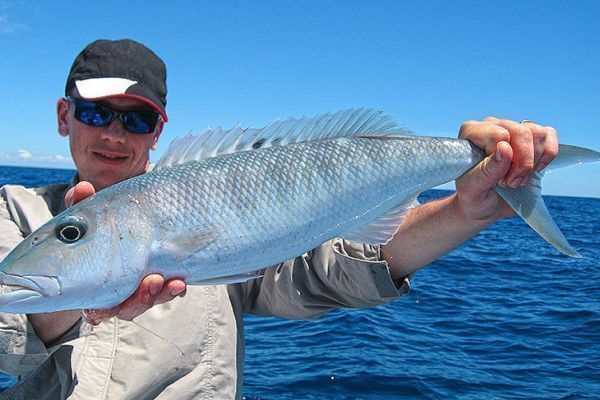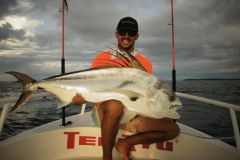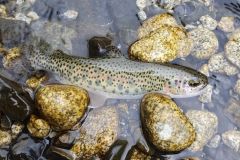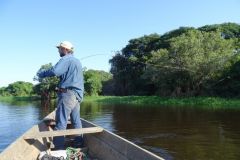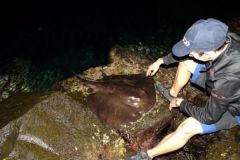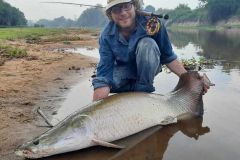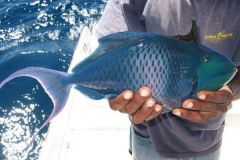Scientific name
Aprion virescens (Valenciennes, 1830)
Morphology
The green snapper has a robust, elongated morphology, with shades of color ranging from dark green to blue-gray. Its snout is long and rounded, with fleshy lips. The strong mouth is adorned with clearly visible canines. The lower jaw is prominent. A dark furrow runs from the eyes to the lips, passing under the nostrils. Its pectoral fins are relatively short.
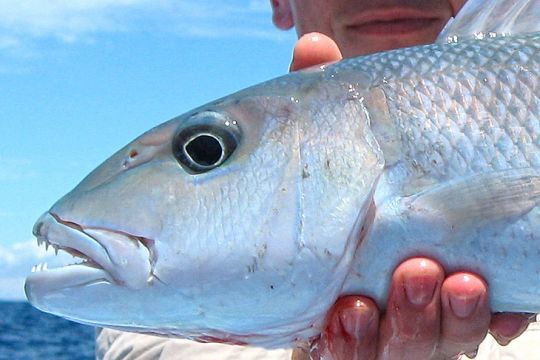
The dorsal fin is very long and in one piece, with clearly visible rays: 10 hard and 11 soft. A black spot appears between the sixth and tenth spines. The caudal fin is forked, each end taking the form of a sickle.
Fishing grounds for chicken fish
The green job snapper is a carnivorous fish that lives between the surface and 180 m depth. It swims vigorously in open water and skirts the slopes of deep lagoons, channels or reefs. Green job snapper can be found near the bottom, usually alone, but sometimes in small groups. They can also be found on large sandy areas near reefs.
Green job snapper fishing techniques
They feed mainly on fish, but also on shrimps, crabs and cephalopods. They hunt in the current, often at the foot of drop-offs and breaks. Light-jigging and long-line fishing allow you to hit this hunter fish vertically. A 3 or 4 cm piece of oily fish can be used to target the hunter fish. A thick fluorocarbon is needed to resist its strong teeth.
Reproduction
This snapper reproduces from May to October. They reach sexual maturity from a size of 40 cm at the age of 4. These snappers can lay several eggs during this period.
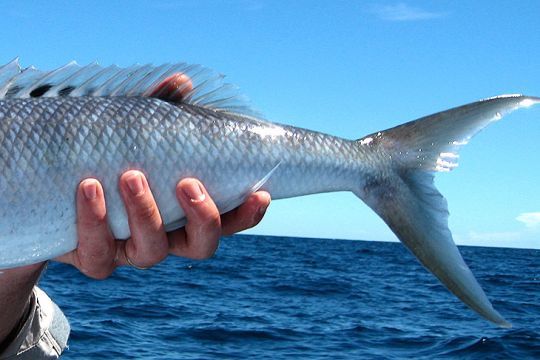
Size and weight
- Legal minimum catch size: none
- Size at sexual maturity: 40 to 45 cm (4 to 5 years)
- Average size: 50 to 70 cm
- Maximum size/weight: 1.15 m âeuros 22 kg
- World record: 20.20 kg âeuros 1.13 m (Iriomote Island, Japan, 16/07/2003)
Good to know
This fish is highly prized for the quality of its fine flesh. Cases of ciguatera poisoning are rare with this fish.

 /
/ 